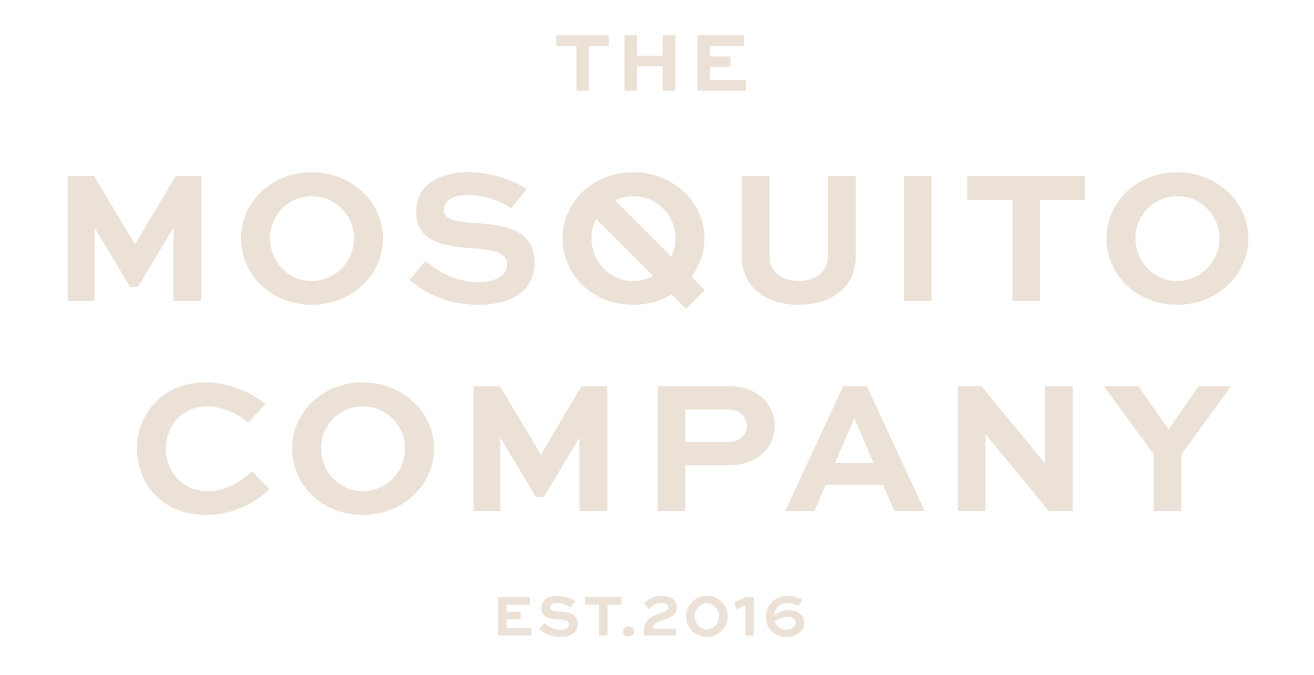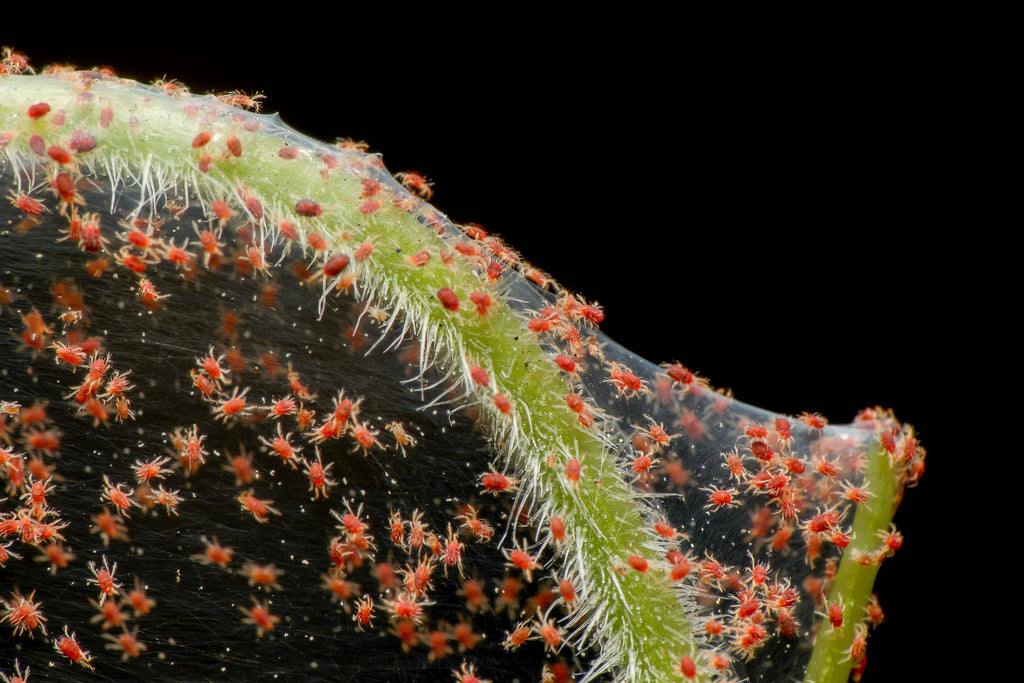If you have been noticing tiny bugs crawling around in the soil of your houseplants, you may be wondering what they are and how to get rid of them. Don't worry - you are not alone! Many people find themselves with an infestation of these little pests at one time or another. In this blog post, we will discuss simple identification and treatment methods for tiny bugs in houseplant soil.
FUNGUS GNATS
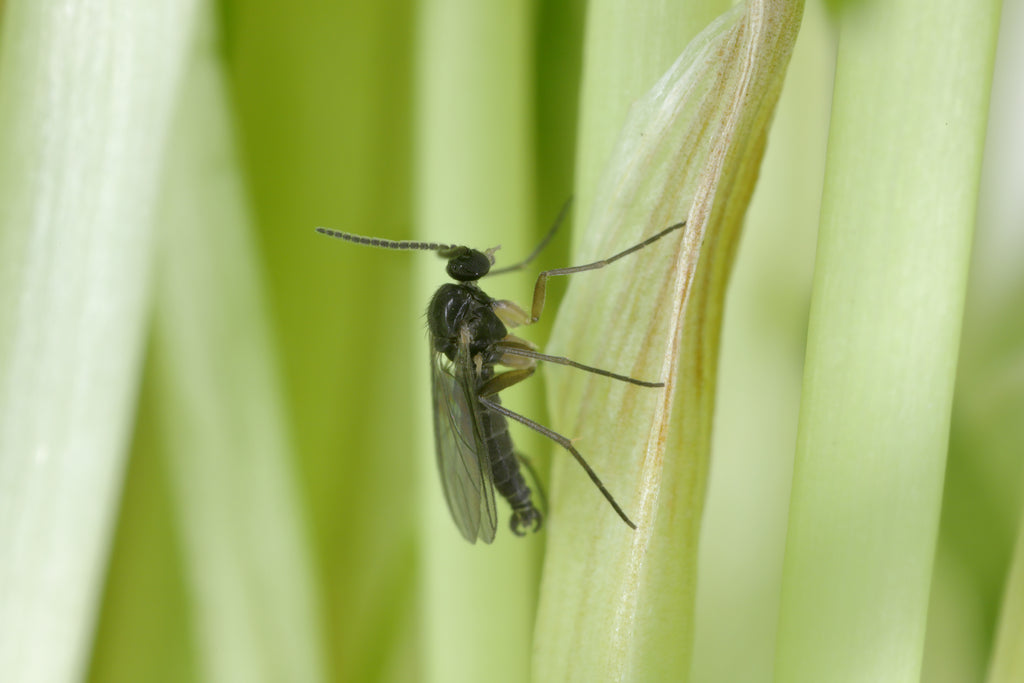
If you are seeing tiny black bugs flying around your houseplants, there is a good chance that they are fungus gnats. Fungus gnats are small, black flies that thrive in moist environments. They can be annoying and difficult to get rid of, but there are a few things that you can do to help get rid of them.
Effective Fungus Gnat Treatments

Moist Soil
The first step is to identify the source of the moisture in your plant soil. Fungus gnats love wet soil, so if you can identify and correct the problem, you will be on your way to getting rid of them. Some common causes of wet soil in plants include over-watering and poor drainage.
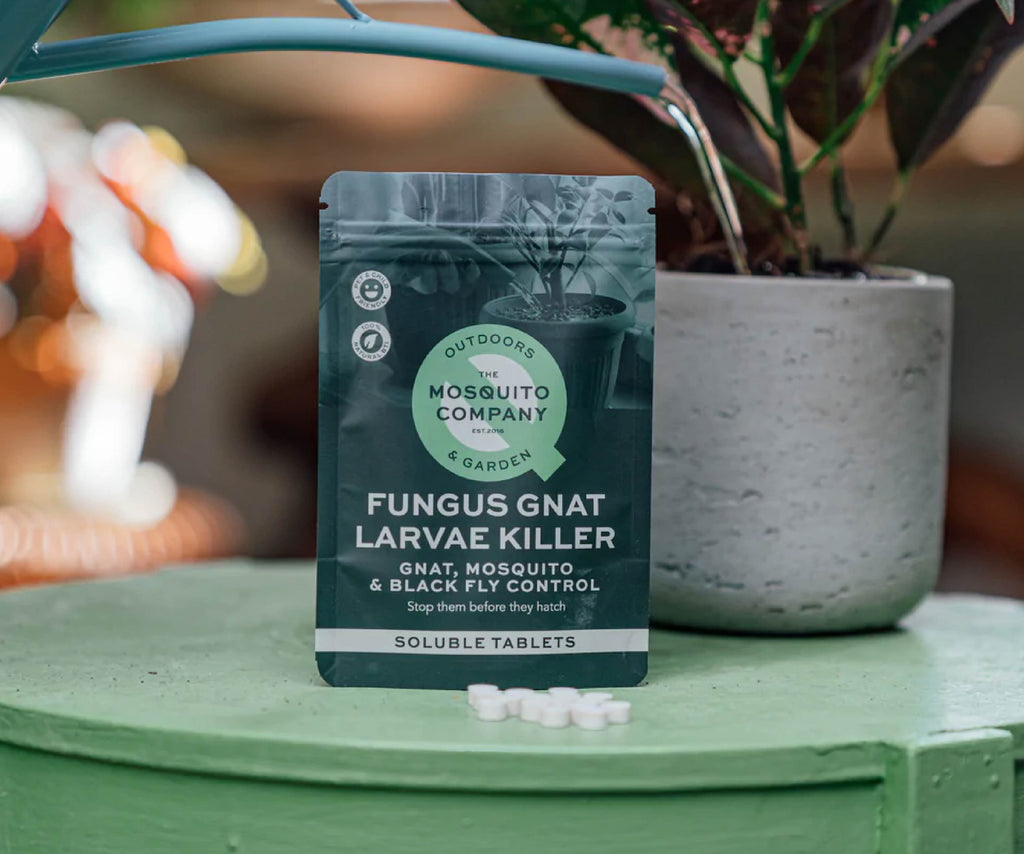
Bti Lavacide
If you would like to take a more natural approach to getting rid of fungus gnats, you can try using BTI (Bacillus thuringiensis israelensis). BTI is a naturally occurring bacteria that is lethal to fungus gnats. It can be purchased online or at most garden stores.
To use BTI, simply mix it with water according to the instructions on the packet. Then, pour it into your plant's soil, making sure to get in all the nooks and crannies. The BTI will kill the fungus gnats larvae, which will help to stop the infestation from growing.
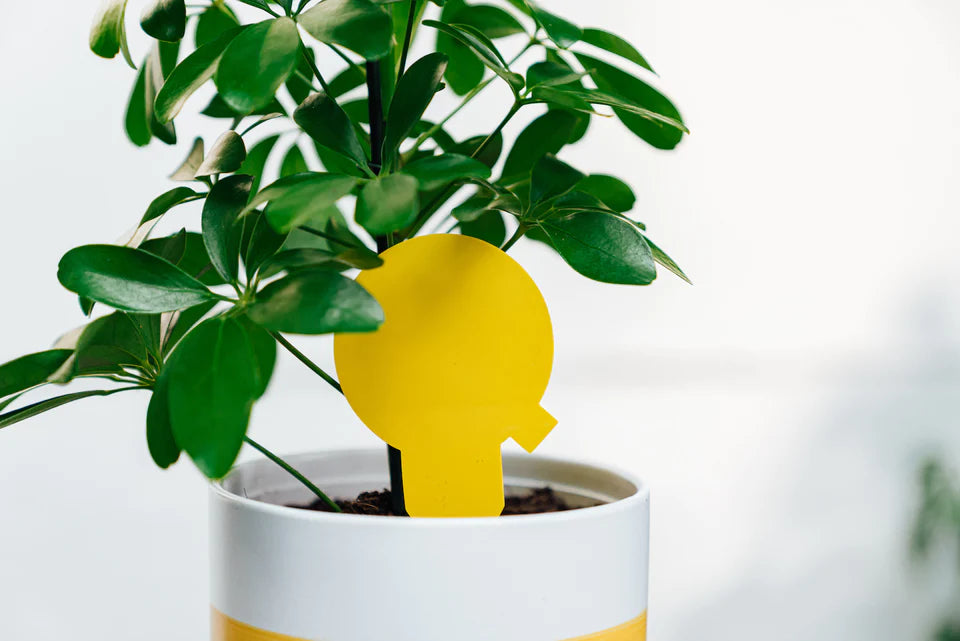
Yellow Sticky Traps
If you want to stop the adult fungus gnats from laying more eggs under the soil and multiplying, you can use yellow sticky traps. These traps are covered in a sticky substance that will trap the flies when they land on them. You can buy yellow sticky traps online or at most garden stores.
Simply place the traps near your houseplants, and the flies will be drawn to them. The traps will catch the majority of the adult fungus gnats, which will help to get rid of the infestation.
We recommend that you use sticky traps alongside BTI larvae killers as this will treat the infestation from both sides.
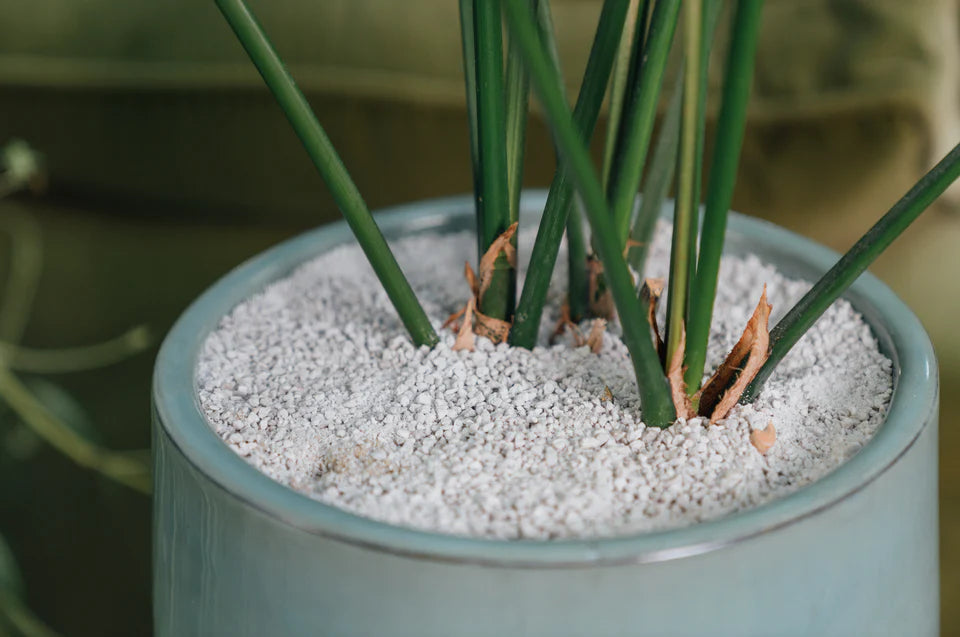
Pot Topper Barrier
If you are using BTI to get rid of fungus gnats, you may also want to consider using a pot topper to help prevent them from laying eggs in the soil. A pot topper is a simple, visually attractive method that sits over the top of your plant pot and prevents the adults from getting down into the soil. This will help to break the life cycle of the fungus gnat and will eventually lead to their eradication. We recommend using a pot topper which includes added Diatomaceous earth to help kill the adult gnats when they try to burrow through.
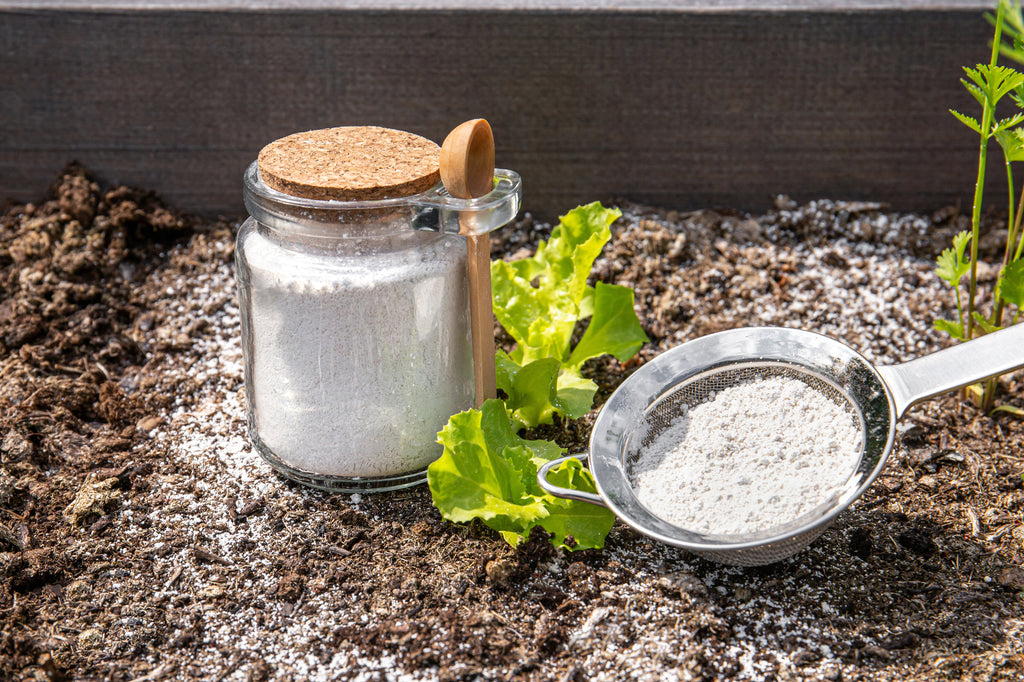
Diatomaceous Earth
If you are looking for a more powerful solution to get rid of fungus gnats, you can try using diatomaceous earth. Diatomaceous earth is a natural substance made up of the fossilized remains of diatoms. It is lethal to insects and can be used to get rid of fungus gnats.
To use diatomaceous earth, simply sprinkle it on the soil around your plants. Be sure to get in all the nooks and crannies. The diatomaceous earth will kill the fungus gnat larvae and will help to eradicate the infestation.Diatomaceous Earth which is an 100% natural deterrent for all sorts of unwarned pests.
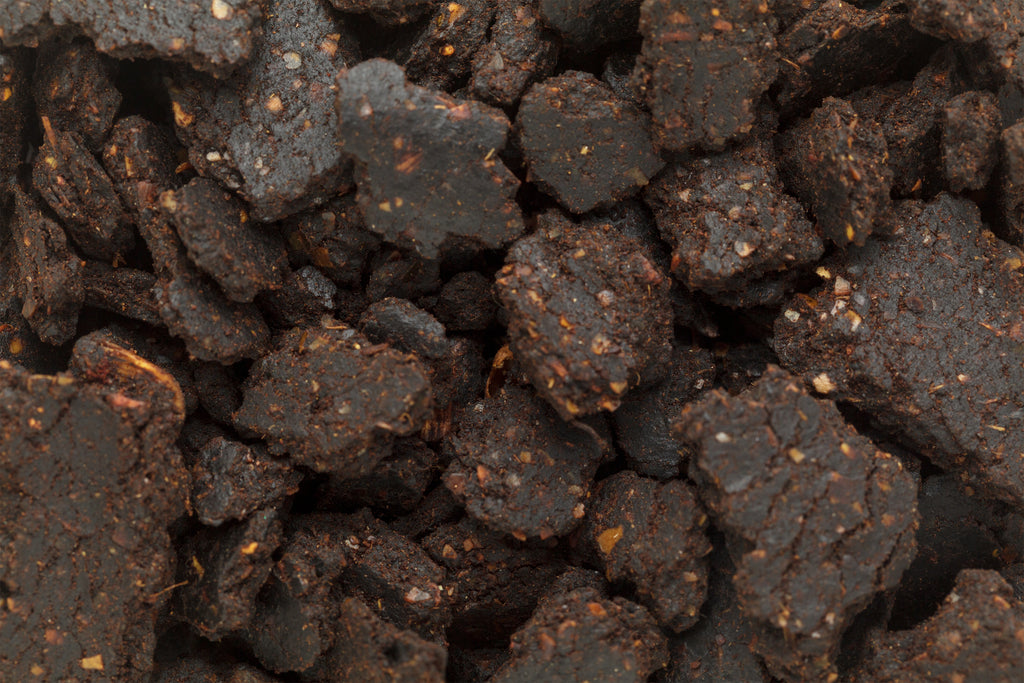
Neem Cake
Another option for getting rid of fungus gnats is to use Neem seed cake. Neem seed cake is a natural product made from the seeds of the neem tree. It is a powerful insecticide and can be used to get rid of fungus gnats.
To use Neem seed cake, simply sprinkle it on the soil around your plants. Be sure to get in all the nooks and crannies. The Neem seed cake will kill the fungus gnat larvae and will help to eradicate the infestation. Another great method is to steep the Neen Cake in water for anything from 2 to 24 hours before pouring it over the effective area. Beware tho some people are put off by the smell in Neem products.
Mealybugs

If you are seeing tiny white bugs crawling on your houseplants, there is a good chance that they are mealybugs. Mealybugs are small, sap-sucking insects that can be difficult to get rid of. The best way to get rid of mealybugs is to identify and treat the source of the infestation.
Effective Mealybug Treatments
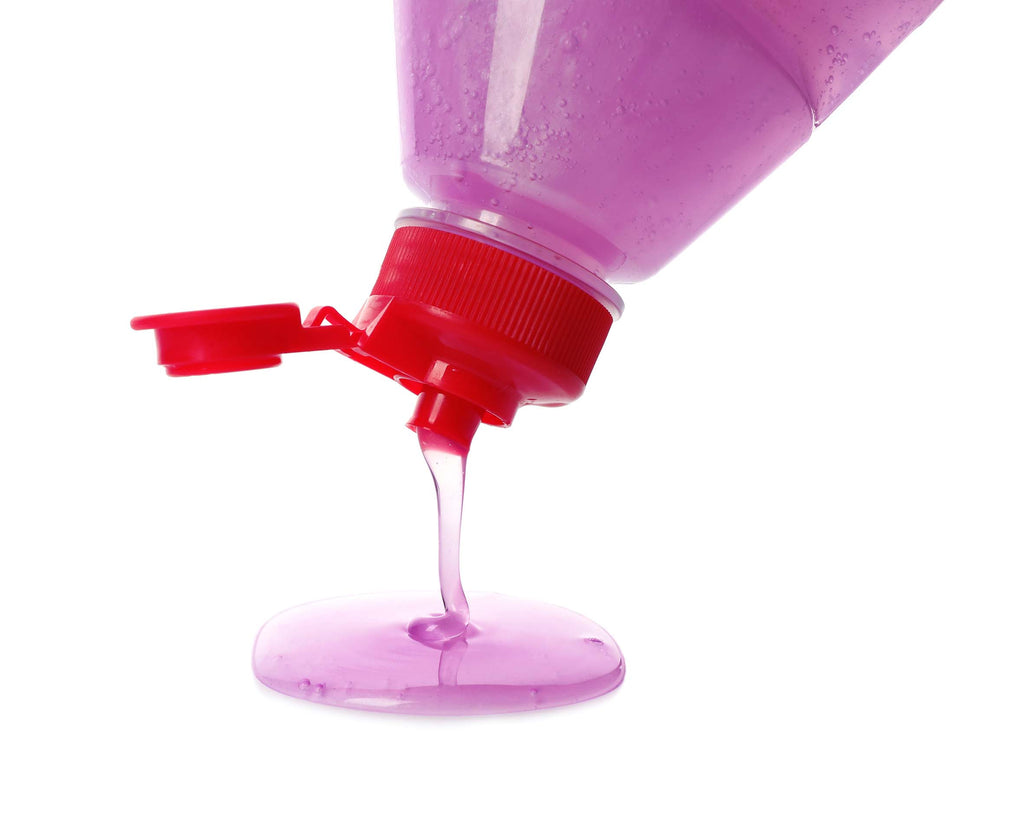
Soapy Water
The first step is to wash all of the leaves and buds of the plant with a mild soap solution. This will help remove any mealybugs that may be present on the plant.
The next step is to treat the soil with an insecticidal soap or horticultural oil. These products will kill any mealybugs that are present in the soil. Be sure to follow the instructions on the product label carefully.
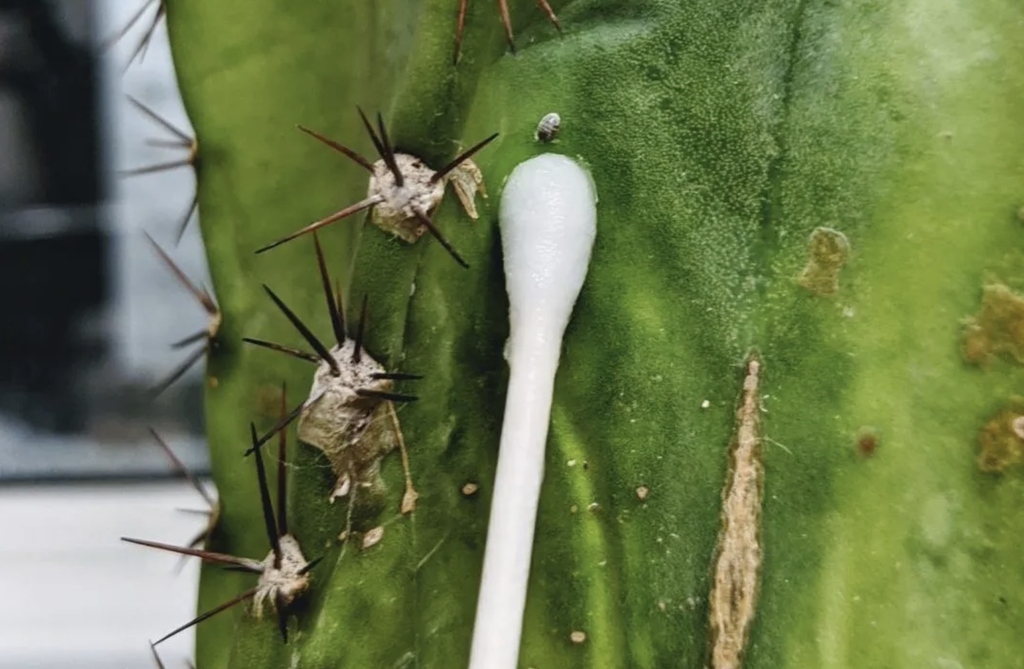
Rubbing Alcohol
You can also try using a cotton ball dipped in rubbing alcohol to remove mealybugs from your plants. Simply rub the cotton ball over the affected areas and the alcohol will kill the mealybugs.
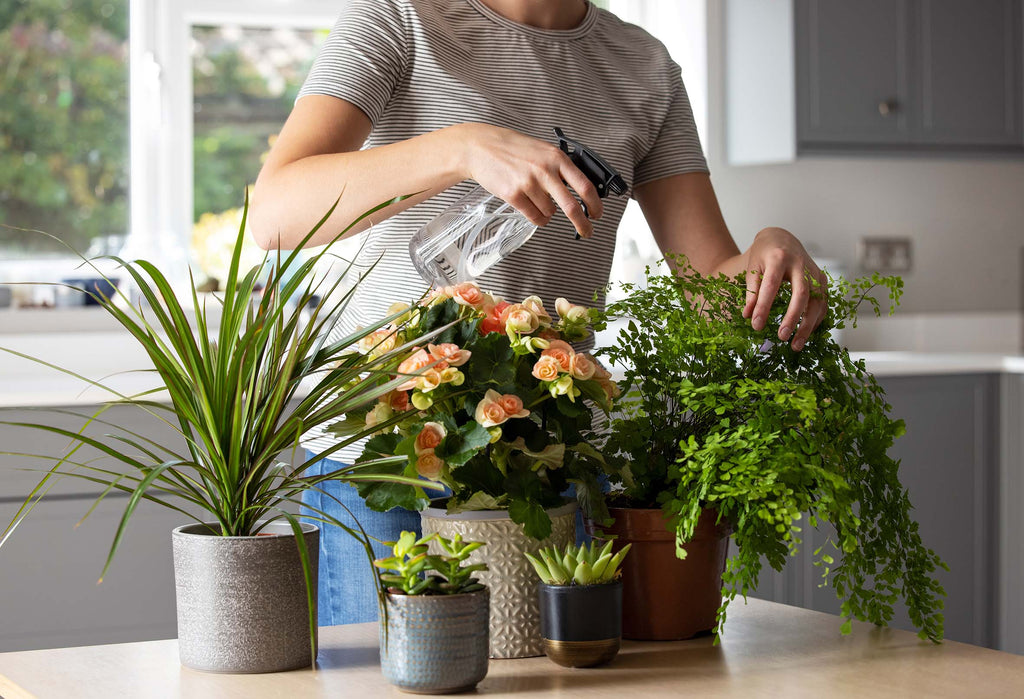
Neem Oil Spray
If you are looking for a more powerful solution to get rid of mealybugs, you can try using Neem oil spray. Neem oil spray is a natural product made from the seeds of the neem tree. It is a powerful insecticide and can be used to get rid of mealybugs.
To use Neem oil spray for getting rid of mealybugs simply shake the Neem oil spray well and spray it on the leaves of the plant. Be sure to coat all of the leaves with the Neem oil spray. The Neem oil will kill the mealybugs and will help to eradicate the infestation in the longterm.
Spider Mites
If you are seeing small yellow or brown spots on the leaves of your plants, it may be a sign of spider mite damage. Spider mites are small, red or brown bugs that feed on plant sap. They can be difficult to get rid of, but there are a few things that you can do to help control them.
The first step is to identify the source of the infestation and correct it if possible. Spider mites love hot, dry environments
Effective Spider Mite Control
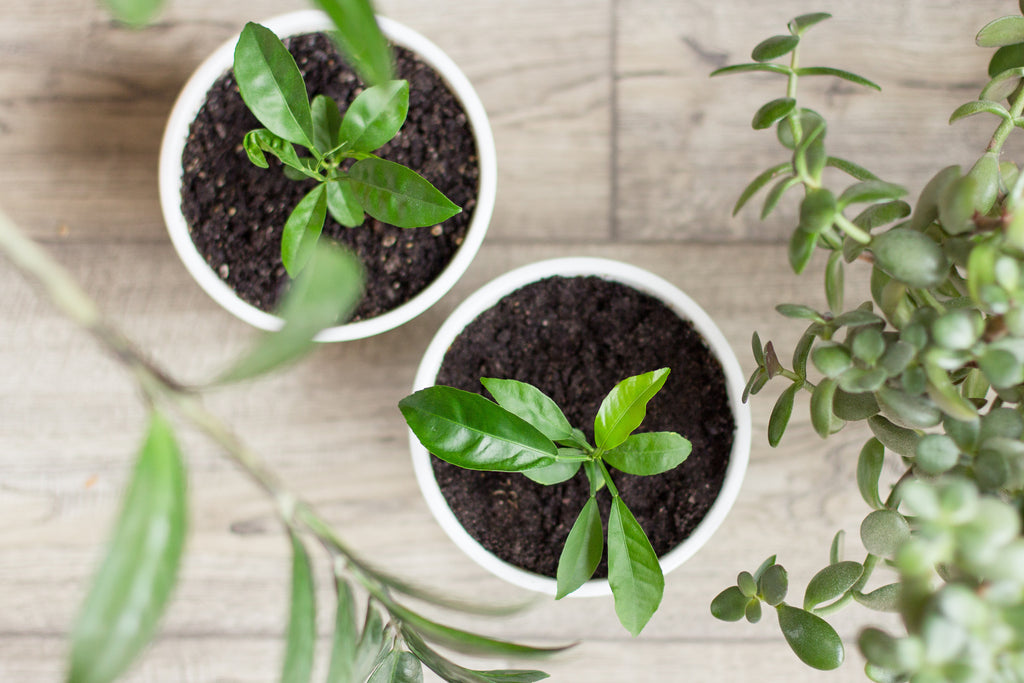
Dry Soil
One way to help prevent spider mites from infesting your plants is to make sure that the soil is kept moist. You can do this by watering your plants regularly, or by using a soil moisture meter to check the soil moisture level.
Horticultural Oil
The first treatment option is horticultural oil. Horticultural oil is a product that is made from vegetable oils and is designed to kill insects. It can be used to get rid of spider mites.
To use horticultural oil, simply shake the bottle well and spray it on the leaves of the plant. Be sure to coat all of the leaves with the horticultural oil. The horticultural oil will kill the spider mites and will help to eradicate the infestation in the longterm.
Insecticidal Soap
The second treatment option is insecticidal soap. Insecticidal soap is a product that is made from fatty acids and is designed to kill insects. It can be used to get rid of spider mites.
To use insecticidal soap, simply shake the bottle well and spray it on the leaves of the plant. Be sure to coat all of the leaves with insecticidal soap. The insecticidal soap will kill the spider mites and will help to eradicate the infestation in the longterm
Soil Mites
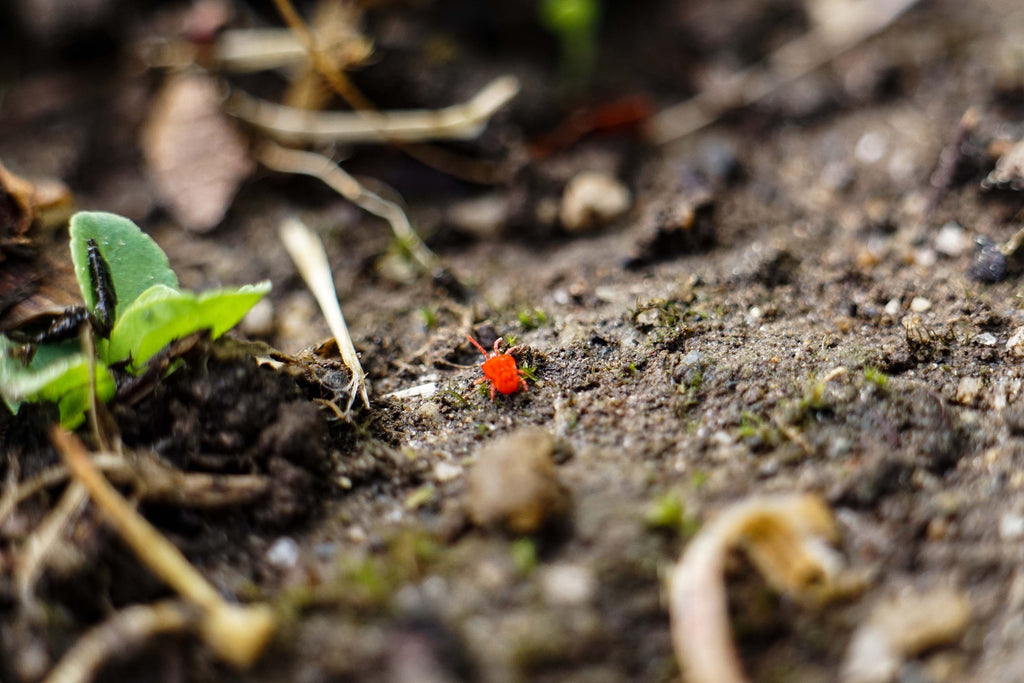
If you are seeing small, red or black bugs crawling on the surface of your soil, there is a good chance that you have a soil mite infestation. Soil mites are tiny, red or black bugs that feed on plant sap. They can be difficult to get rid of, but there are a few things that you can do to help control them.
Effective Soil Mite Treatment
Rubbing Alcohol
You can try using a cotton ball dipped in rubbing alcohol to remove soil mites from your plants. Simply rub the cotton ball over the affected areas and the alcohol will kill the soil mites.
Neem Oil
Neem oil is a natural insect control method that can be used to get rid of soil mites in your plant pots. It is made from the seeds of the Neem tree and has powerful pest-fighting properties. To use neem oil as a drench, you will need to prepare it first. In order to apply it, you need to prepare the neem oil solution first. Start by mixing 1 teaspoon of neem oil with 1 liter of warm water. Make sure the neem oil is properly mixed into the water, as without any clumps. Once the solution is ready simply pour it over the top soil making sure you soak 100% of the surface area.
Hydrogen Peroxide
Another option for treating soil mites is hydrogen peroxide. Hydrogen peroxide is a product that acts as an oxidizing agent and can help kill off the soil mites. To use it, simply mix 1/4 teaspoon of hydrogen peroxide with 1 cup of water. Be sure to avoid getting it directly on the plant itself, as this may damage or burn the leaves and stems. Gently pour the solution over the surface of the soil and repeat this process on a regular basis. Over time, you can help get rid of your soil mite infestation.
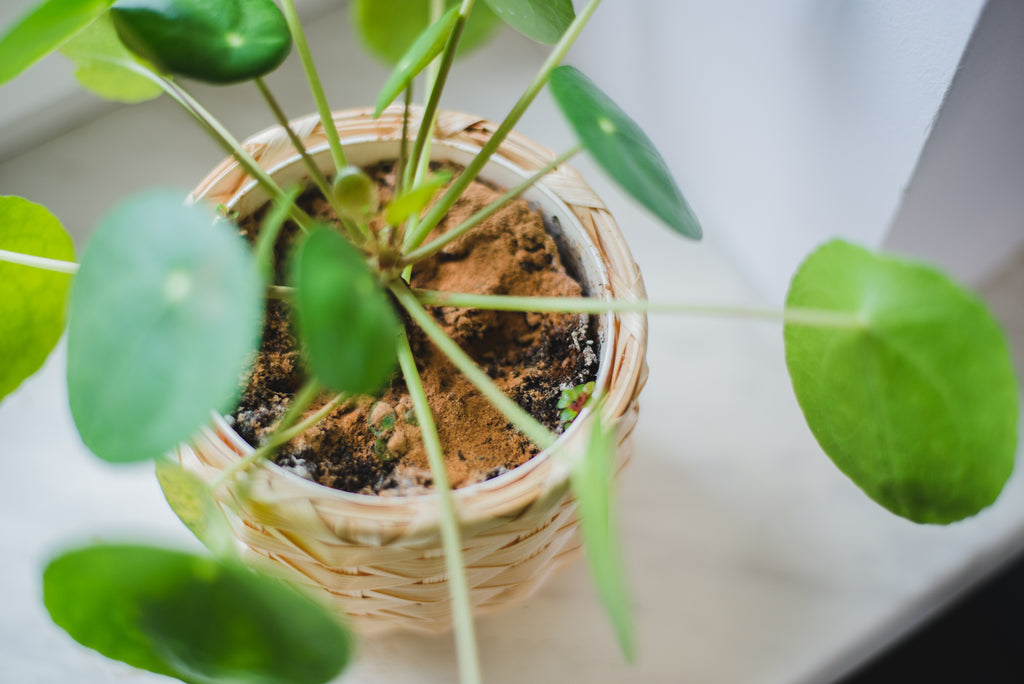
Cinnamon
Cinnamon is another natural remedy that you can use to treat soil mites. Cinnamon contains powerful antifungal properties and is known for its ability to destroy a wide range of pests and insects. To use it, simply sprinkle cinnamon powder directly onto the soil surface where the infestation is located.
